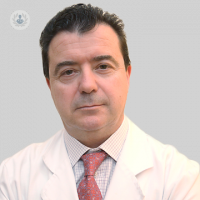Frequently asked questions about vasectomy
Written by:Vasectomy is a very simple and safe method of contraception that is performed under local anesthesia. In vasectomy the vas deferens are sectioned to prevent sperm from going from the testicles to the penis. The prostate and the seminal vesicles continue to produce the same fluid, therefore, the semen that is expelled looks the same, but without sperm and without risk of pregnancy.
After vasectomy, male sexuality does not change, and there is the advantage of not being afraid of pregnancy.
Can anyone do it?
It is done with local anesthesia and when you finish you go to your home. It can be done in any male, unless he takes anticoagulant drugs (Sintrom) or antiplatelet drugs.
Vasectomy is much more reliable than other methods of contraception. Eliminates the risk that contraceptive pills can cause to women and allows to enjoy sexuality without the need of a condom and without fear of pregnancy.
What is vasectomy without a scalpel and how is it different from conventional vasectomy?
The vasectomy without scalpel was designed in China in 1974 by Dr. Shlianqiang Li. It is performed under local anesthesia. With a special clamp designed by Dr. Li locates and fixes the vas deferens outside the scrotum.
Later with a clamp (mosquito) with very sharp tips (Figure 2), a minimum hole is made in the skin, the vas deferens is removed and it is then cut and the segment of the vas deferens that goes to the prostate is coagulated. Through this hole both vas deferens are sectioned. As the hole is minimal, it is not necessary to give points on the skin.
The traditional technique consists of making two incisions in the scrotum above the testicles and locating and sectioning the vas deferens. It requires two incisions and give points to close the skin.
The vasectomy without scalpel offers the same effectiveness as the classical technique, it is simpler, the recovery is faster and there is less possibility of bleeding.
What care should be followed in the postoperative period?
At the end of the vasectomy, the man goes home or to work.
You must wear a tight slip for 7 days and avoid major efforts the first 3 days. As we do not give points on the skin, it is simply necessary to put a few drops of povidone iodine for 4 or 5 days.
Can it be reversed?
Vasectomy can be reversed by microsurgery. This technique is called vaso-vasostomy and if performed by an andrologist expert in microsurgery, excellent results are obtained.
To facilitate reversion, vasectomy should be performed by an experienced uro-andrologist. There are several tricks that facilitate reversal: section the vas deferens away from the testicle, not coagulate the segment of the vas that comes from the testicle and preserve the artery and vein of deferential.



